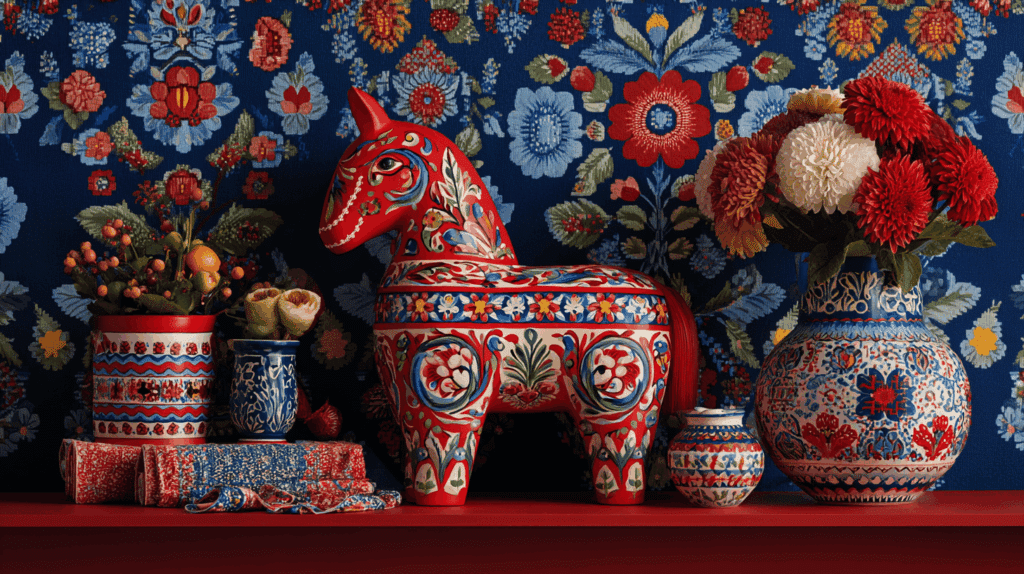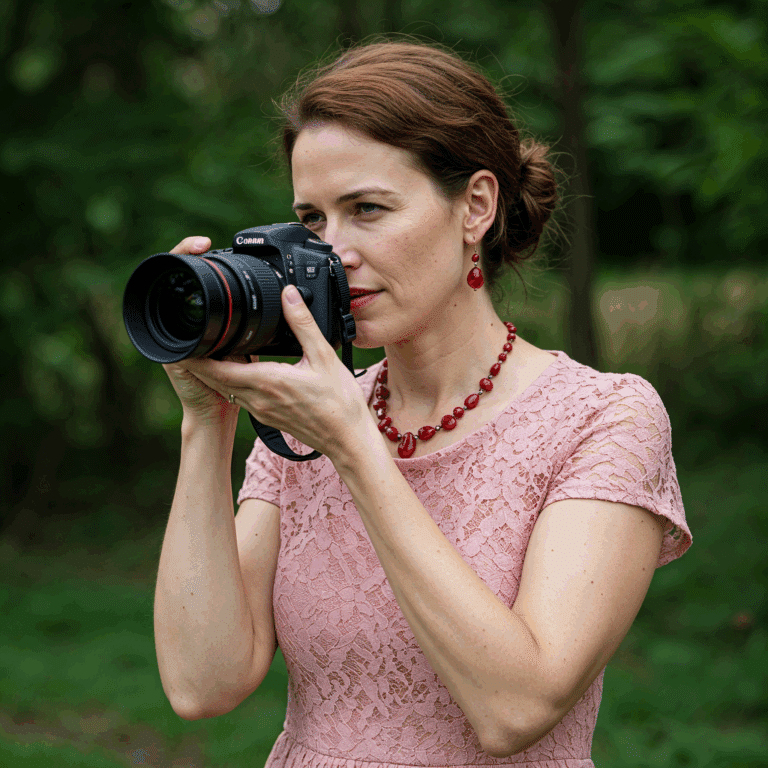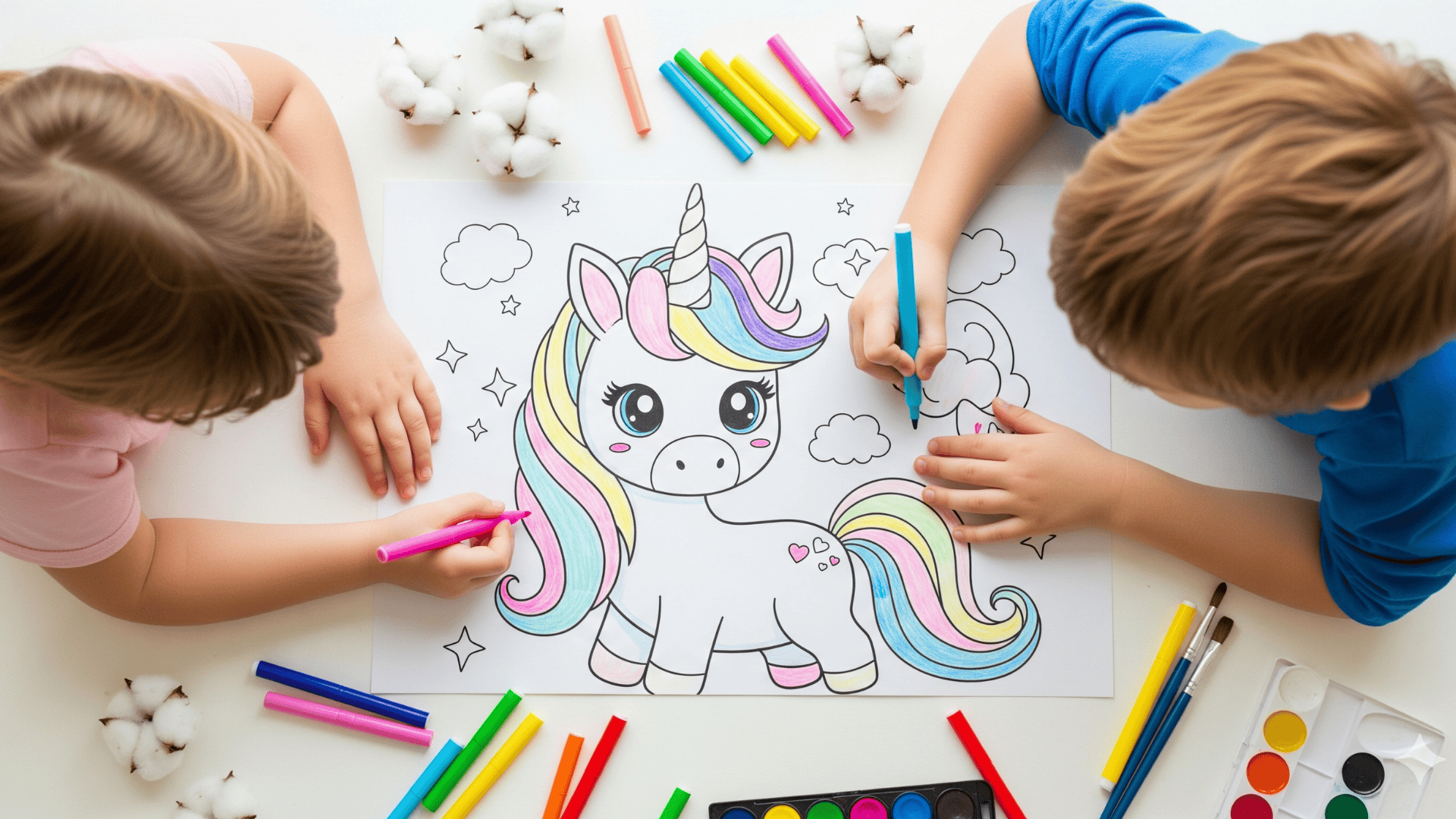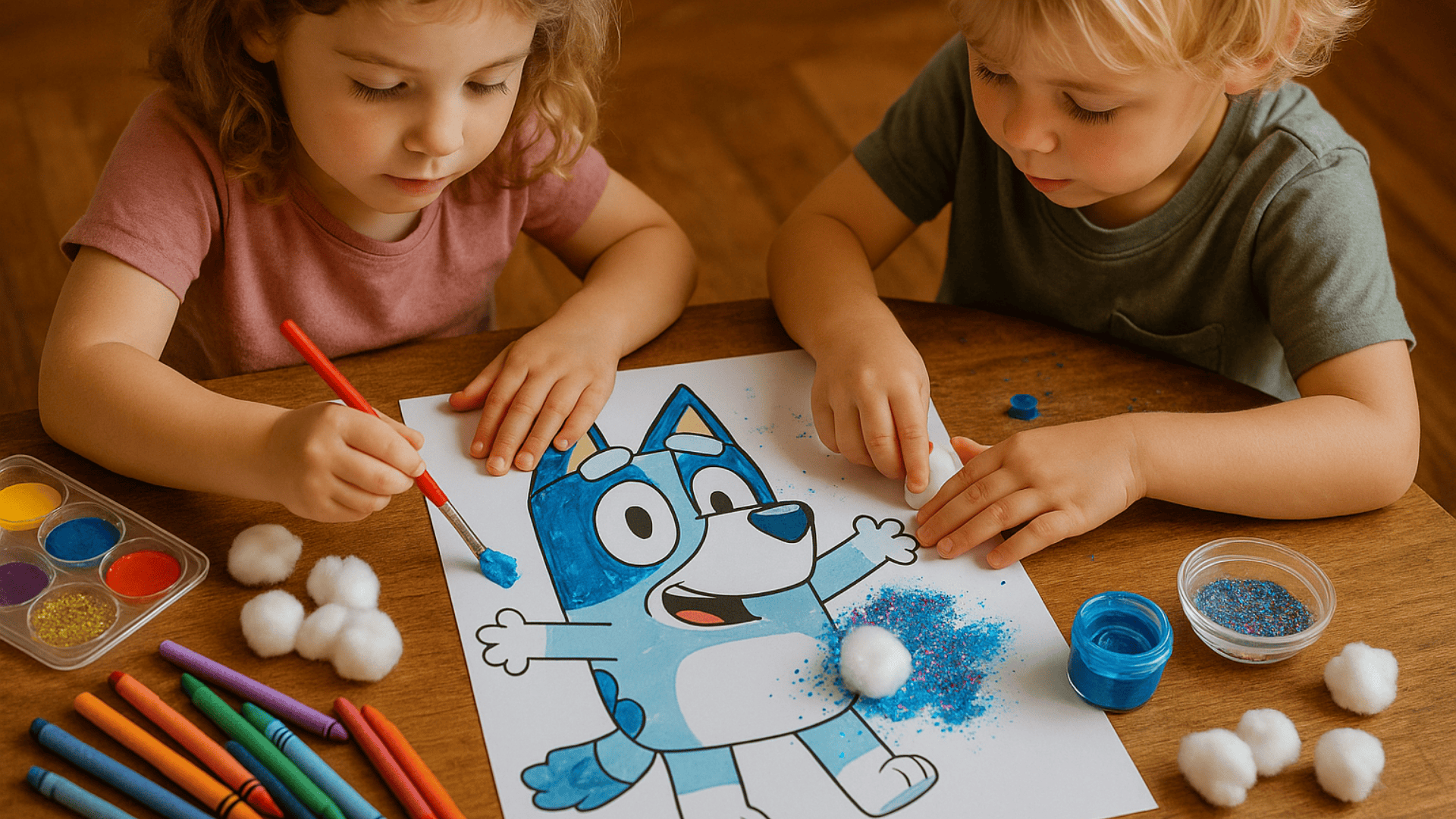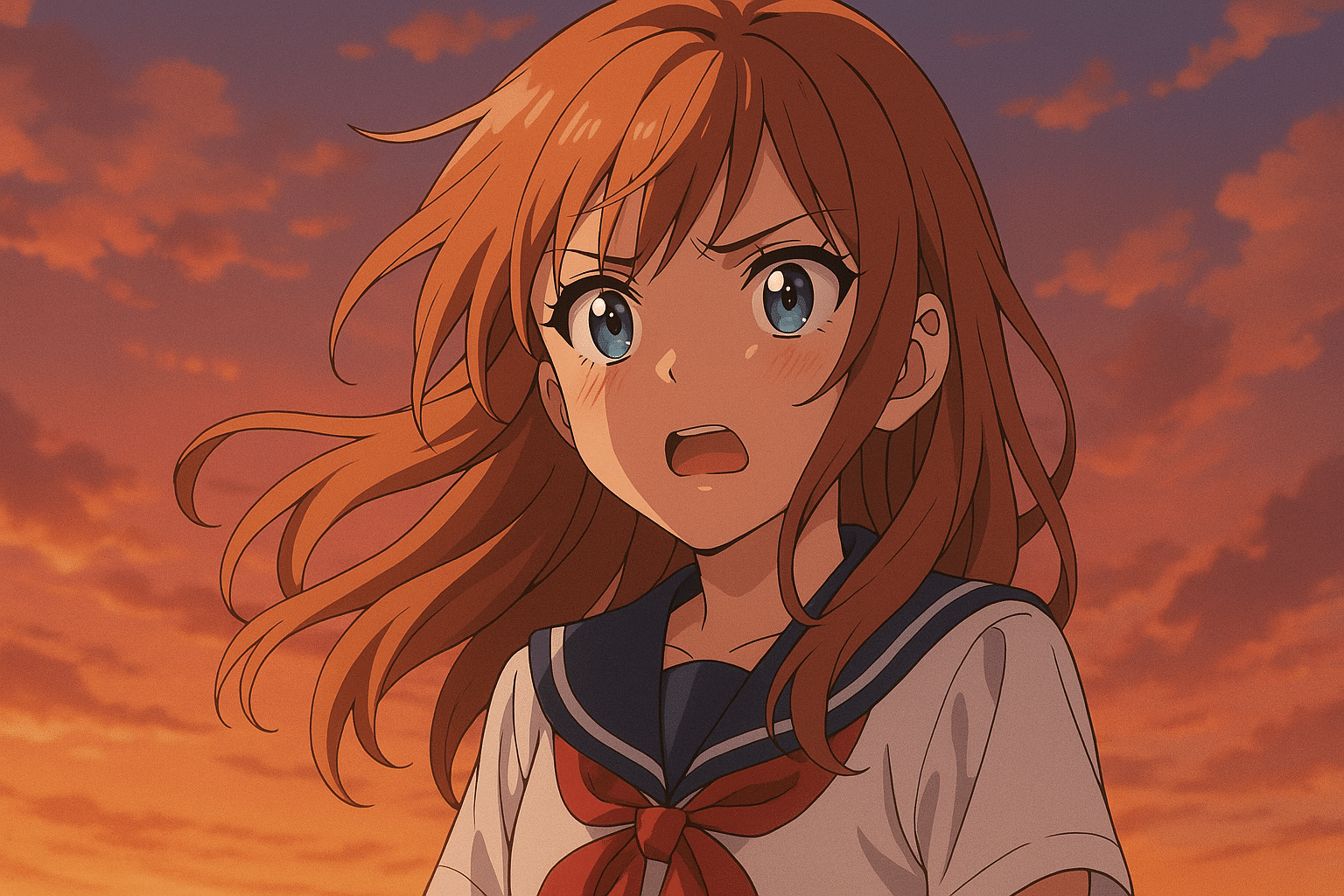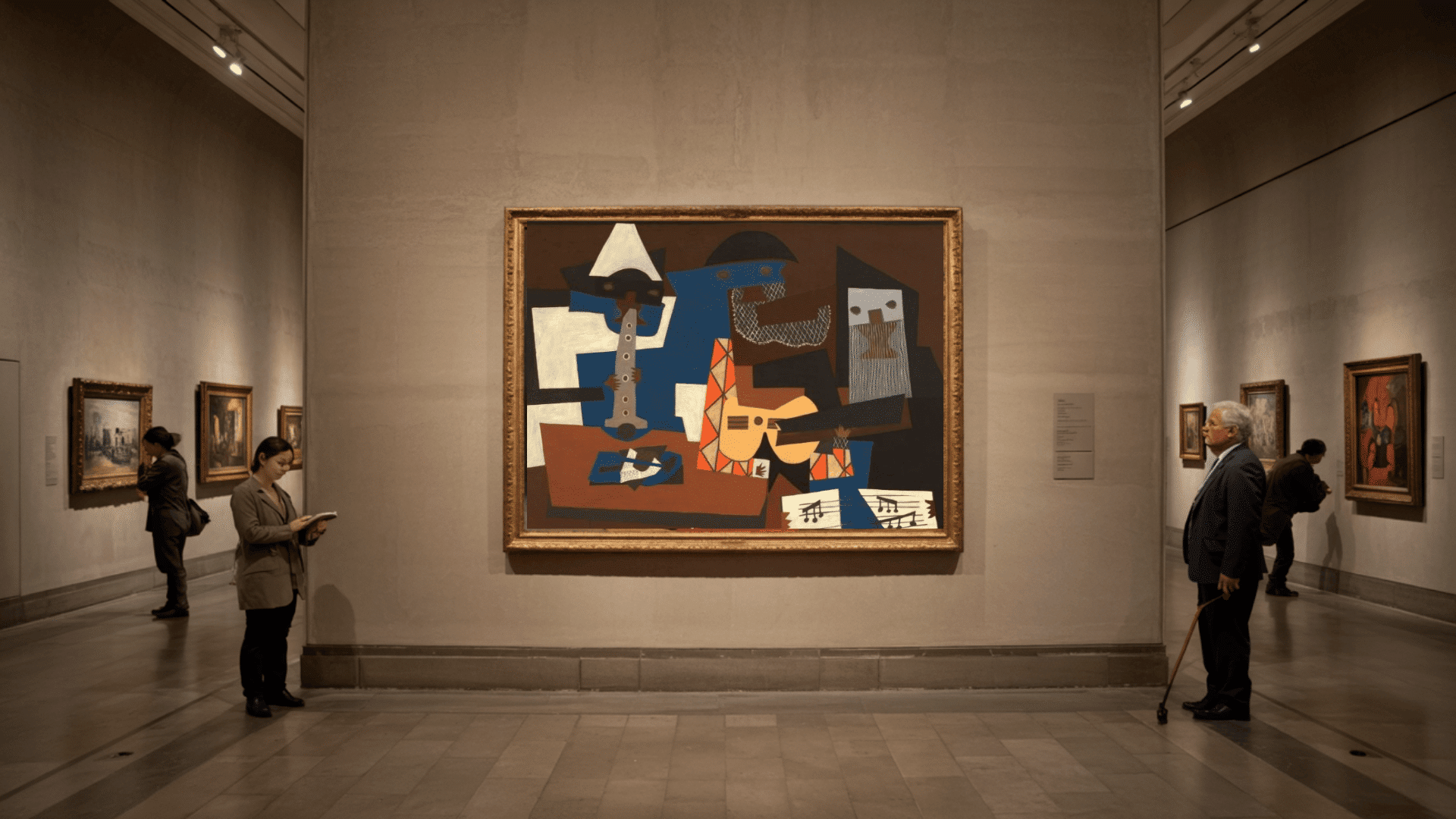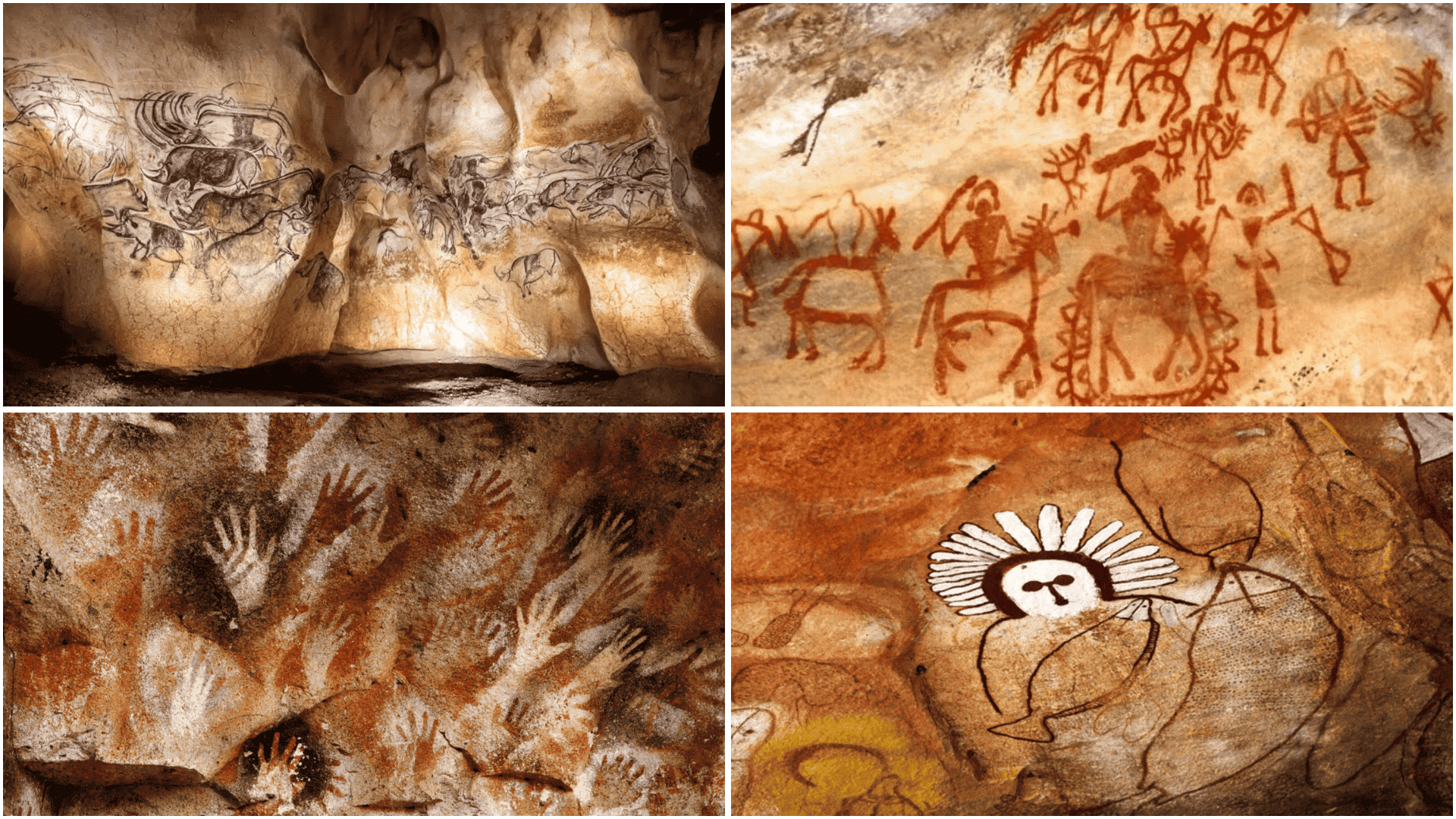Have you ever wondered what makes Swedish folk art and Scandinavian folk art so interesting?
These traditional art styles come from Sweden and Other countries in Northern Europe, which are known for bright colors, stories, and unique designs like painted Dala horses, flowery patterns on textiles, and furniture.
Folk art was often created by ordinary people, including farmers, families, and village craftsmen, who decorated everyday objects using simple tools and local materials.
This guide will show you where these traditions started, explain common motifs, and help you uncover the creative spirit of Scandinavia.
Historical Roots and Evolution
Swedish folk art originated in rural villages, where farmers and craftsmen adorned everyday items such as furniture, textiles, and tools with lively patterns and designs.
Over time, these artistic styles spread across Scandinavia, adapting to changes such as the development of farming and the growth of towns.
The Viking Age influenced folk art with decorated ships and animal symbols. Between the 1600s and 1800s, regional styles emerged, like painted furniture and textiles.
These traditions were passed down through families and communities, helping each area preserve its unique look and cultural heritage for generations.
Artistic Techniques and Styles of Swedish Folk Art
Swedish and Scandinavian art features a diverse range of crafts, including wood, textiles, pottery, glass, embroidery, and metal, showcasing rich traditions.
1. Woodcarving
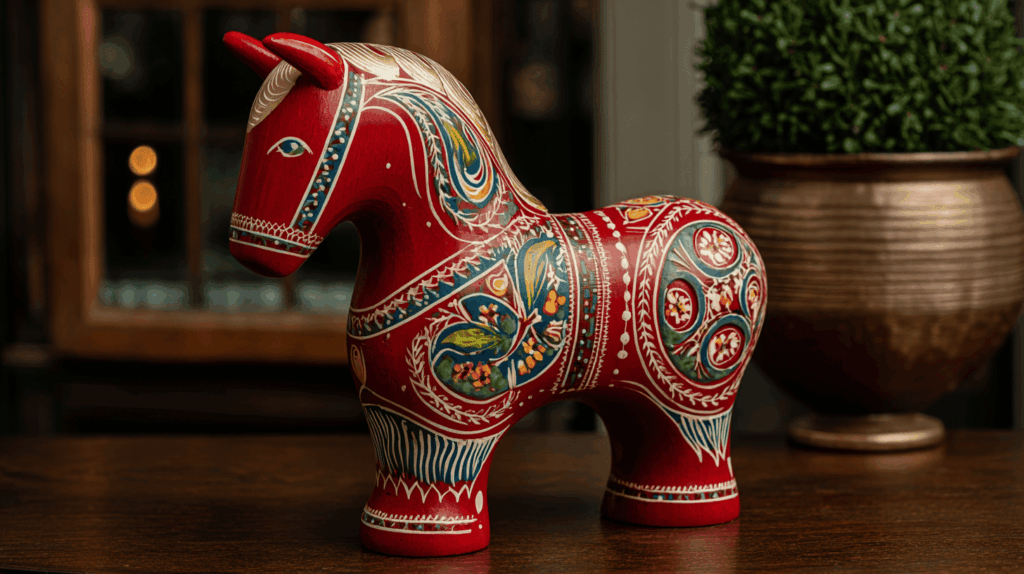
Intricate woodcarving is a hallmark of Swedish art, particularly in the creation of Dala horses, hand-carved wooden figures characterized by smooth curves and painted in lively patterns.
These carvings decorate furniture, utensils, and keepsakes, connecting craftsmanship with tradition and serving as a cultural symbol of Sweden’s artistic heritage.
2. Painted Furniture (dalmålning)
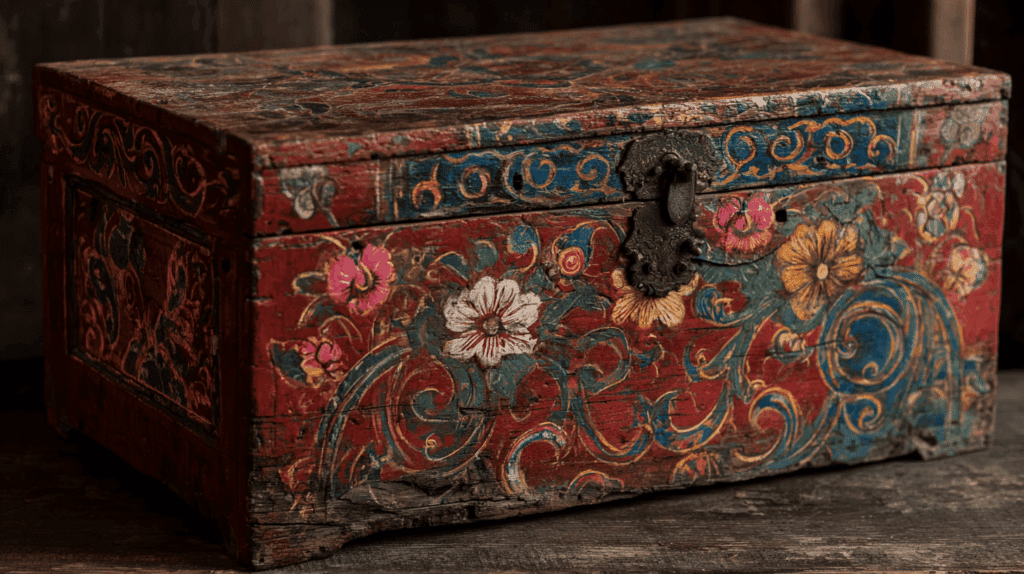
Dalmålning is a traditional Swedish painting style applied to rustic furniture like tables and chests.
Featuring bold floral designs, swirling motifs, and geometric patterns, this technique uses bright colors to change everyday objects into lively works of art. It reflects regional creativity and historical decorative arts in Sweden.
3. Textiles and Embroidery
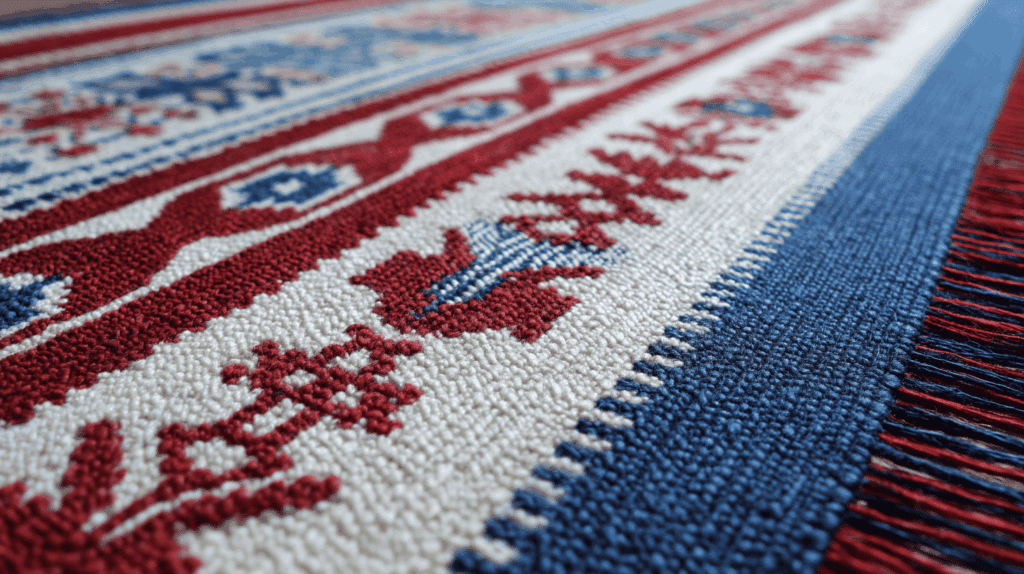
Colorful textiles and embroidery are key in Scandinavian art. Traditional tapestries, bedding, and clothing show symmetrical patterns and local motifs, often inspired by nature and cultural stories.
These handicrafts combine utility with aesthetics, preserving age-old designs that have been passed down through generations.
4. Glasswork and Pottery
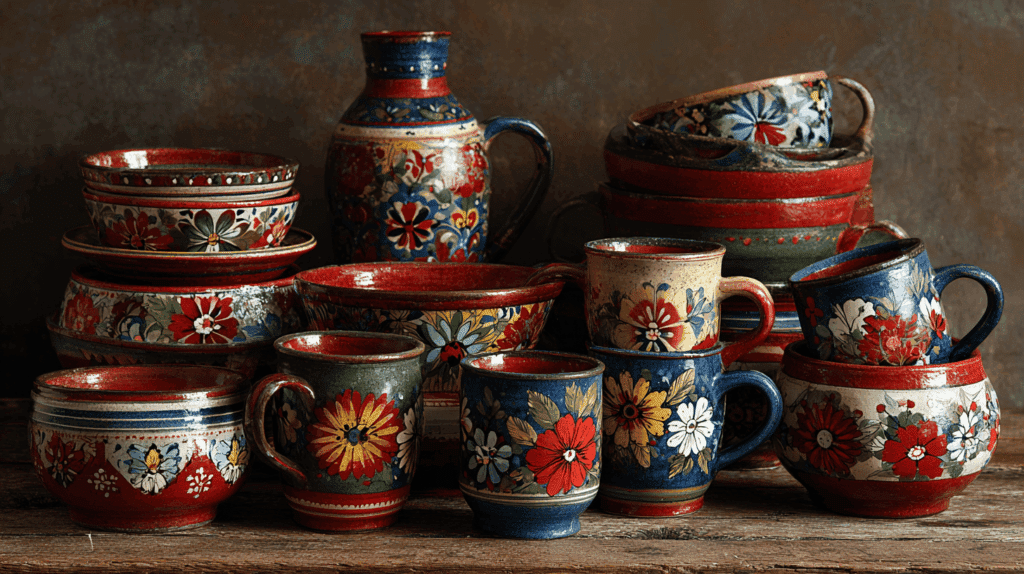
Functional household items, such as glassware and pottery, become artistic canvases adorned with folk designs.
Bright colors, floral decorations, and symbolic patterns turn everyday vessels into pieces rich with cultural meaning and craftsmanship, highlighting the artistry woven into daily Scandinavian life.
5. Kurbits Painting
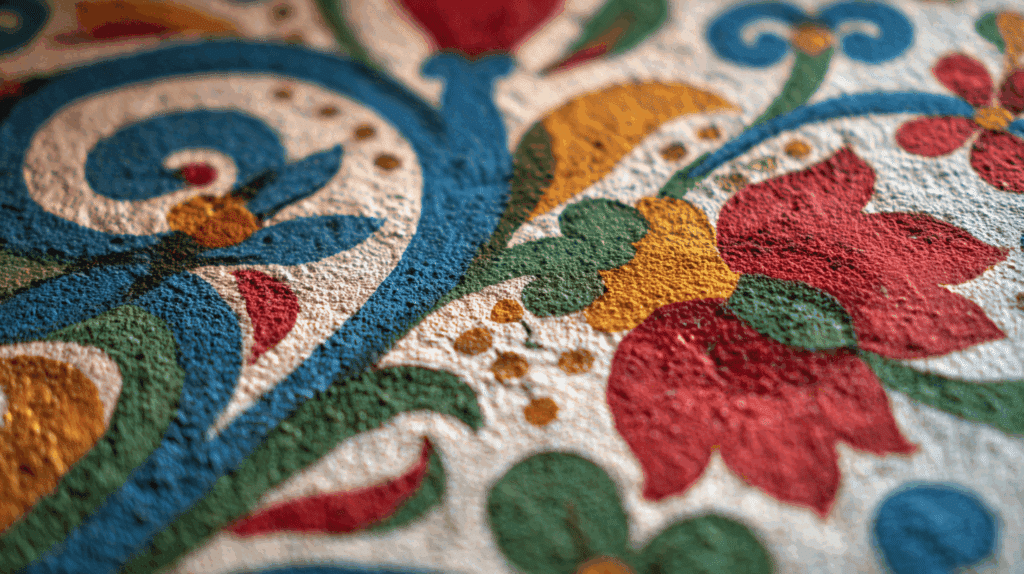
Kurbits is a distinct Swedish folk art style known for its fanciful, swirling floral motifs inspired by gourds and flowers.
Often seen in mural paintings and decorative crafts, kurbits feature bright colors and flowing shapes, telling stories through their lively, expressive patterns, which are uniquely tied to regional identity.
Motifs and Symbolic Meaning
Scandinavian folk art is full of motifs that carry meaning, from nature-inspired shapes to traditional symbols. These designs aren’t just decorative; they tell stories about culture, heritage, and everyday life.
- Floral and Botanical Patterns: Flowers, leaves, and trees symbolize life, prosperity, and the region’s bond with nature.
- Dala Horses: Painted wooden horses from Dalarna represent luck, protection, and Swedish pride.
- Birds and Hearts: Common in textiles and painting, they express love, faith, and harmony between people and their land.
- Mythical Figures: Tales of tomtes (elves), Nils Holgersson, and even Viking beasts find their way into folk art narratives.
- Regional Variations: Motifs differ between areas, Dala horses in Sweden, rosemaling florals in Norway, and geometric symbols in Denmark.
Symbolic meanings are often associated with fertility, luck, local folklore, and core values such as faith and hospitality.
Cultural and Social Importance
Folk art played a significant role in celebrations and storytelling, marking special moments such as births, weddings, harvests, and festivals.
Artists and families in villages used folk art to show their community’s values, beliefs, and pride. As people moved and societies changed, folk art styles and meanings also changed, but the traditions stayed strong.
Today, it still inspires Nordic design and culture. Modern artists honor these deep roots while adding fresh ideas.
Folk art connects people to their heritage and continues to be a lively part of life in northern Europe.
Folk Art Today: Modern Influences and Where to Find It
Traditional Swedish and Scandinavian folk art continues to thrive in galleries, museums, annual festivals, craft markets, and homes from Stockholm to rural Dalarna.
Museums such as the Dalarnas Museum in Falun showcase rich collections of folk paintings, textiles, and iconic Dala horses.
Contemporary designers blend classic motifs with modern styles in fashion and interiors. Festivals and workshops across Sweden often offer visitors chances to learn folk art techniques hands-on.
These living traditions celebrate heritage while inspiring fresh creativity, making folk art an important part of Sweden’s cultural life today.
Wrapping It Up
Scandinavian and Swedish folk art show the creativity and traditions of northern communities. For many centuries, these art forms have preserved cultural stories and continue to inspire people today.
Whether seen in museums, homes, or modern spaces, this colorful art connects people everywhere. It celebrates a shared history and creative spirit.
Today, this folk art endures through the work of new artists, festivals, and ongoing respect for tradition.
It is a beautiful way to link the past with the present and keep culture alive for the future.
Frequently Asked Questions
How Is Swedish Folk Art Preserved Today?
Swedish folk art is preserved through museum conservation, community workshops, and restoration projects that maintain traditional techniques while adapting to modern materials.
Are There Educational Programs for Learning Scandinavian Folk Art?
Yes, art schools and cultural centers offer classes and apprenticeships aimed at teaching traditional crafts like woodcarving, textile weaving, and kurbits painting.
How Do Modern Artists Interpret Folk Art?
Contemporary Artists Blend Folk Motifs with New Media and Styles, Creating Innovative Works that Respect Tradition While Appealing to Modern Tastes.
What Role Does Technology Play In Folk Art Today?
Technology Aids in Documenting, Preserving, and Sharing Folk Art Globally Through Digital Archives, Virtual Museums, and Social Media Platforms.

